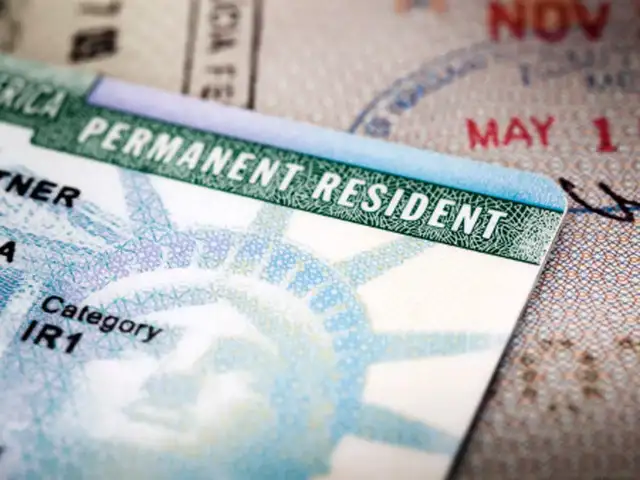Do you want to come to the United States long-term as a religious worker? If you have the R1 visa and are eagerly waiting for a green card, you are not alone. For many, it starts with serving in religious organizations — only to realize they want to settle down in the U.S. Yet, the transition from R1 visa to green card can seem like running the marathon. And if you’re already deep into the process, we’ll outline the key things to remember, from eligibility to pitfalls, to finally make this dream a reality. Let’s take you through the entire process!
Table of contents
- What Is an R1 Visa and Who Qualifies for It?
- Is It Possible to Transition from an R1 Visa to a Green Card?
- What Are the Eligibility Requirements for R1 to Green Card Transition?
- What Challenges and Delays Should You Watch Out For when Transitioning from R1 Visa to Green Card?
- FAQs
- Conclusion
- References
- Recommendations
What Is an R1 Visa and Who Qualifies for It?

The R1 Visa is a nonimmigrant visa that permits foreign nationals to live and work in the United States temporarily in religious vocations or occupations. In order to qualify, applicants need to be employed at least part-time (minimum 20 hours per week) for a nonprofit religious organization, a religious organization that has received a group tax exemption, or a nonprofit organization that is affiliated with a religious denomination within the United States. They also need to have belonged to the religious denomination for at least two years before filing the petition.
The sponsoring religious organization must file Form I-129 through the petition process. The supporting documents have to show the organization’s tax-exempt status, the religious worker’s suitability and information about compensation or self-support. If the eligibility requirements for these exemptions conflict with a sincerely held religious belief, organizations can apply under the Religious Freedom Restoration Act (RFRA) to be exempt from that requirement.
USCIS may perform pre-approval or post-approval site visits for compliance purposes. The visa grants an initial stay of up to 30 months, extendable in increments, for up to five years. After this period, applicants are ineligible to return to the U.S. for 10 years, except for those whose work was seasonal or intermittent.
Read this related content: Netherlands Work Visa Requirements 2025
Is It Possible to Transition from an R1 Visa to a Green Card?

Yes. Getting a green card is a step-by-step process for the religious worker who wants to join the rest of us in the United States permanently. Sure, while it is widely assumed that an R-1 visa is a prerequisite, it is certainly not a requirement. If the religious worker has two years of qualifying employment experience overseas, the R-1 visa can be skipped and the religious worker can apply directly for a green card. But in some cases, getting the R-1 visa first can actually speed up the initial entry process by a couple of months. This is how:
Step 1: I-360 Petition is Filed by Employer
After the requisite two years of experience as a religious worker, the U.S. employer must submit an I-360 petition with U.S. Citizenship and Immigration Services (USCIS). The things you need are-
I-360 Petition Form: The I-360 form is a general immigration form. The employer needs to fill out the sections specific to religious workers.
Employer Attestation: The employer is required to detail information on the religious organization, its membership, affiliations, previous religious worker or R visa petition filings, and its ability to pay the offered wages.
Proof of Nonprofit Status: You will need to provide documentation from the IRS that confirms the employer’s nonprofit status, such as a tax-exempt determination letter.
Ability to Pay: There must be documentation that the employer has the ability to pay the offered wages — usually W-2 forms, financial statements, tax returns or an annual report — should be provided.
Proof of Membership: Documentation that the employee has been a member of the religious denomination for at least two years preceding the filing of the petition.
Evidence of Two Years of Employment: Evidence of the employee’s two years of qualifying employment at the time of submission of the I-360 petition. This might also contain a letter from the employer and copies of other helpful documents like W-2 forms.
Filing Fee: You can see the most recent fee information listed on the Form I-360 page of the USCIS website. Payment will be accepted via USCIS Form G-1450 (Authorization for Credit Card Transactions), cheque, or money order.
When the petition is submitted, USCIS will issue a receipt notice along with instructions for checking the status of the case online.
Site Visits
Current USCIS practice is to conduct site visits for first-time religious worker petitions to verify the legitimacy of the organization and proposed employment. This includes inspecting primary and branch locations, reviewing relevant records and interviewing employees and church leaders. Such site visits are also common for new R-1 visa applications. Qualified staff can expect mangled descriptions of the inspectors and notice of site visits from employers to other employees ahead of the site visit, so they can direct the USCIS inspector to the right person.
Step 2: Employee Either Adjusts Status in the U.S. or Applies for Immigrant Visa Abroad
After the I-360 petition is approved, the next step would be to adjust status in the U.S., or to apply for an immigrant visa at a U.S. consulate abroad.
Submitting I-485 Adjustment Application in the US
Individuals who are beneficiaries of approved I-360 petitions and who are currently in lawful immigration status in the United States are able to submit Form I-485 (Application to Adjust Status) to USCIS in order to get their green card. Dependent family members (spouse and children under 21) can file as derivative applicants (I-485 applications).
Note that for work based immigrants, the process for future hires overseas is to submit documents and fees to the National Visa Center (NVC). When the NVC finishes processing, the worker and family members go to their homecountry’s U.S. consulate to receive immigrant visas. They then receive a temporary I-551 stamp in their passports, as proof of status, and the actual green card is mailed to a domestic address shortly after — usually within weeks, but sometimes months — after they land.
Read this related content: Best UK Jobs With Visa Sponsorship
What Are the Eligibility Requirements for R1 to Green Card Transition?

Eligibility requirements are different for transitioning from an R1 visa or going straight to the green card as a religious worker. These requirements both serve to ensure that the person in question is actively engaged in work that is religious in nature and that the employer is a bona fide nonprofit religious organization. Here are the main eligibility requirements:
Qualifying Religious Work
The applicant must have been a member for at least the last two years immediately preceding the application date of a legitimate religious denomination with a bona fide nonprofit religious organization in the United States.
You must have also been working continuously in a religious vocation or occupation for two years at the least. This work can be done inside or outside the U.S.
Qualifying roles include:
- Ordained ministers or clergy.
- Vocations of a religious nature (for example, monks and nuns or religious brothers and sisters).
- Religious occupations with a particular religious commitment, such as liturgical workers, religious teachers, or missionaries.
Read also: Balancing Work and Mental Health: What Works in 2025
Employment from a Bona Fide Nonprofit Religious Organization
The organization must be a nonprofit recognized by the Internal Revenue Service (IRS) as a tax-exempt religious organization.
The organization must have sufficient means to pay the religious worker as promised.
Two Years Experience Evidence
- The petitioner must show that he or she has at least two years of qualifying religious work experience within the two years immediately preceding the filing of the petition. Acceptable documentation includes:
- Letters from employers.
- Tax docs, like W-2 forms or pay stubs.
- Certificates of ordination (for ministers).
- Non-Immigrant Visa Status (If Applicable)
- For an applicant with an R1 visa, they need to have maintained lawful status in the country until the green card is granted.
The R1 visa is not required for applying for a green card. If the applicant has the necessary two years of religious work experience overseas, then they can apply directly for a green card.
You should read also: Visa Interview Questions You MUST Prepare For — And How to Nail Every Answer!
Employer’s I-360 Petition
The U.S. employer needs to submit Form I-360 (Petition for Amerasian, Widow(er), or Special Immigrant) to U.S. Citizenship and Immigration Services (USCIS).
The employer must include:
- Evidence of nonprofit status.
- Evidence of being able to afford the offered wages.
- Confirmation that the entity is a bona fide religious organization and the nature of the employment.
Good Moral Character
The applicant must prove he or she is of good moral character, which has generally meant no serious criminal history or immigration violations.
USCIS might need background check, fingerprint, and interview.
Incase you were in the U.S before, you should read: H4 Visa Interview Questions: Avoid These Mistakes!
Process of Adjustment of Status or Consular
The I-360 petition, when approved, will require the applicant to either:
- If they are lawfully present in the U.S., file Form I-485 (Adjustment of Status).
- If they are outside the U.S., they will go through consular processing by applying for an immigrant visa at a U.S. consulate.
No Intention to Give Up Work on Religion
The applicant must submit the appropriate evidence demonstrating that the applicant intends to continue working in a religious capacity once the green card is approved; USCIS needs to know that the applicant will join the world of green card holders waiting to use the document.
Read this related content: 5 Australian Companies That Sponsor Work Visas
What Challenges and Delays Should You Watch Out For when Transitioning from R1 Visa to Green Card?

If you are switching from R1 to green card or applying for the first time for green card as a religious worker, you may face a number of challenges and delays. Knowing about these hurdles can help you prepare to avoid setbacks. Some common problems to watch for include:
USCIS Site Visits
First-time applicants under the religious worker category may expect a site visit before approval, as the United States Citizenship and Immigration Service (“USCIS”) routinely conducts site visits to confirm the legitimacy of the religious organization and the type of proposed employment.
Site visits can involve:
- Interviews with staff and church officials in person.
- Inspection of documents (payroll records, financial documents, etc.)
- Overview of the Operations (Main and Branches).
Prevention: RFE and denial can occur if the organization is unprepared or the supporting materials are not consistent.
Tip: Notify staff of the office visit, and have all documentation (payroll, financials, employee records) accessible.
Proof of Nonprofit Status
Religious organizations must provide documentation from the Internal Revenue Service (IRS) to verify their nonprofit, tax-exempt status.
Common delay: There will be a delay in your petition without this documentation. It must be complete and current.
Tip: Make sure the IRS determination letter or other paperwork proof of nonprofit status is current and properly filed.
Lack of Two Year Experience Evidence
The applicant is to provide evidence of employment in a qualifying religious occupation or vocation for at least two continuous years immediately before the application.
Common delay: If records like pay stubs, tax forms or letters from employers are inconsistent or insufficient, USCIS may issue an RFE or deny the petition.
Tips: Use clear, detailed, and verifiable records including:
- W-2s or paycheck stubs to verify employment.
- Letters from supervisors verifying the duties and dates of employment.
- Logs of any volunteer work done, if available.
Employer’s Ability to Pay
The religious organization offers to pay the wages, and USCIS requires evidence that it can. If financial records show lack of funds, it can lead to RFEs or denial.
Tip: Prepare and submit:
- Annual reports or financial filings.
- Store your bank statements or tax returns.
- Payroll records.
Long USCIS Processing Times
I-360 petitions and I-485 adjustment of status applications can take an unpredictable amount of time to process. Backlogs at USCIS or heightened scrutiny of religious worker petitions can lead to processing times exceeding one year.
Tip: Monitor USCIS processing times online periodically and contact USCIS if processing appears beyond normal processing timelines.
Check out: How To Get Best USA Jobs With Visa Sponsorship
Adjustment of Status Problems
Similar to the process of applying for your I-360, those eligible to apply for an adjustment of status must remain in non-immigrant status in the U.S. until their I-360 is approved. If the applicant’s visa status expires or they work without permission, USCIS may deny the green card.
Tip: You should remain in valid status and not work without authorization while the Form I-485 is pending.
Consular Processing Delays
For applicants who reside outside the United States, the National Visa Center (NVC) is responsible for document processing before sending them to the U.S. consulate to face a visa interview. If the wrong or incomplete documents are provided, visas can take longer to be issued.
Tip: Have all your civil documents available (birth certificates, marriage certificates, police reports, etc.) and, if needed, regularly translated.
Medical Exams and Background Checks
Applicants for a green card must undergo a medical examination by a USCIS-designated civil surgeon. Incomplete medicals or background check issues can delay processing.
Tip: Book medical exams early, and tell the truth about medical and criminal history.
Read this related content: Family-Based Immigration in the U.S- Sponsorship & Visa
FAQs
Yes! Your spouse and unmarried children under 21 can be derivative beneficiaries and apply for a green card. They will have to file Form I-485 together with yours, or after your I-360 approval. They also have to stay lawfully until their green cards are approved.
The time frame can vary, but usually:
I-360 Petition: 8–12 months or longer depending on USCIS backlogs.
I-485 (Adjustment of Status): Eight to 14 months, sometimes longer.
All of it can take between 1.5 to 2 years and even longer
Your R-1 visa would still be valid until it expires, and your continued stay in the US would legally be under ”authorized stay” until a decision is made by USCIS. But if your I-360 petition is denied, you may be placed in removal proceedings, so you must maintain a lawful status.
Yes. After filing Form I-485, Form I-765 can be filed to apply for Employment Authorization Document (EAD). You can work legally while waiting for your green card application approval.
Not necessarily. If you file Form I-485 while remaining in lawful R-1 status, you are in “pending adjustment” status. But if your I-360 gets denied you would lose legal status unless you stay on R-1 or some other visa that you are otherwise eligible for.
No. There is no premium processing available. You will have to wait through the normal processing times.
Yes, but only after receiving Advance Parole (Form I-131) before departing. Leave the U.S. without it, and USCIS will treat your application as abandoned — and you could be denied re-entry.
If your green card application is denied by USCIS you could:
File a motion to reopen or reconsider the decision
If you have issues with your eligibility, reapply.
Depart the U.S. if there is no remaining legal status.
Conclusion
Your permanent residency in the U.S. as a religious worker is within reach with patience and the right approach. So, stay organized and stay the course, and sooner or later that green card will be in your hands.
Do you want to get Permanent Residency in Australia, you should read: Permanent Residency in Australia: A Complete Guide
Since you are still here, you should read: Temporary Protected Status (TPS) in the U.S Countries Designated and Application Procedures
References
- nolo.com- Religious workers going from R1 Visa to Green Card
- Immigrationlawyersusa.com- How can I convert from R1 Visa to Green Card
- USCIS.gov- Convert from R1 Visa to a Green Card






